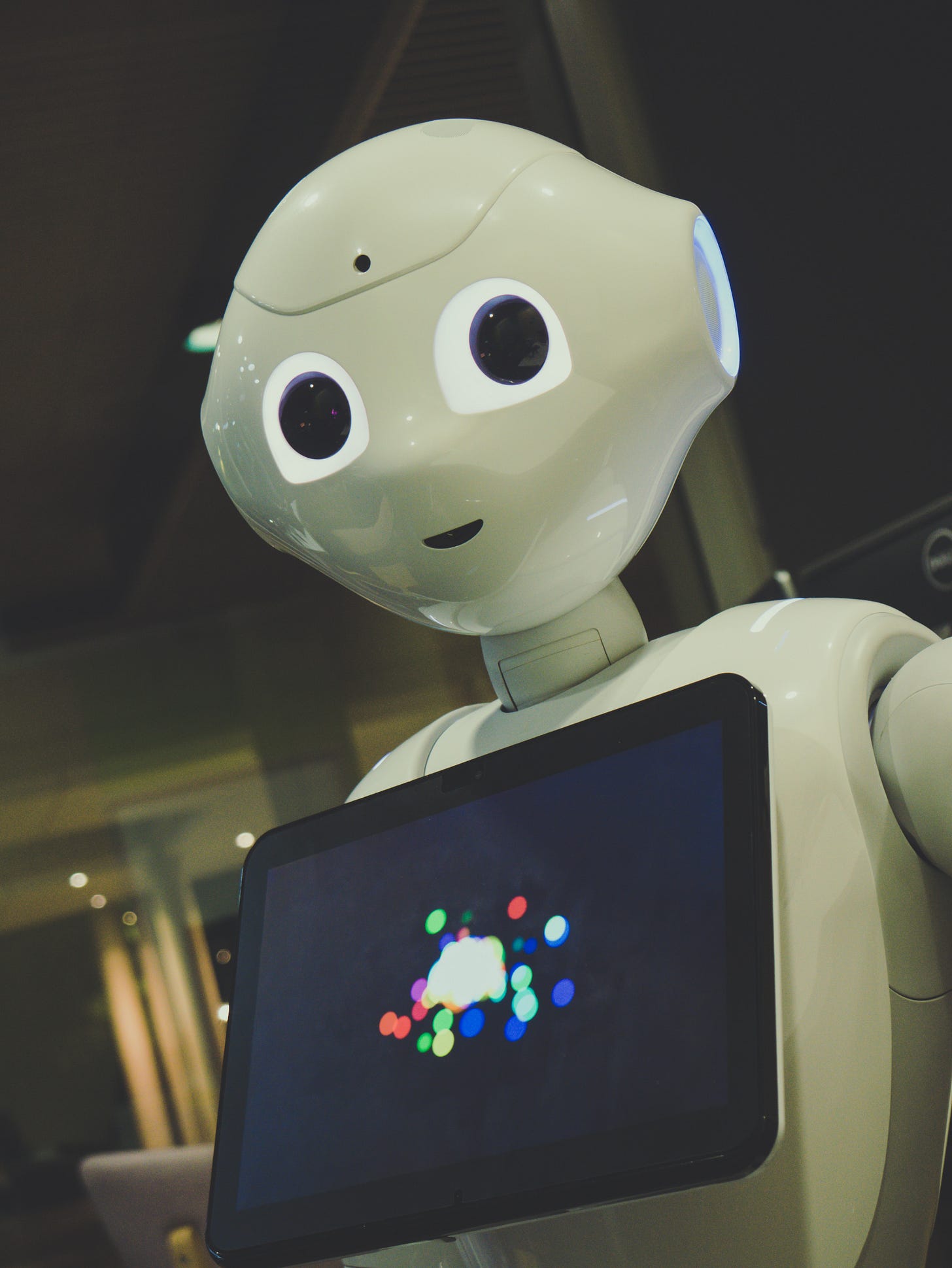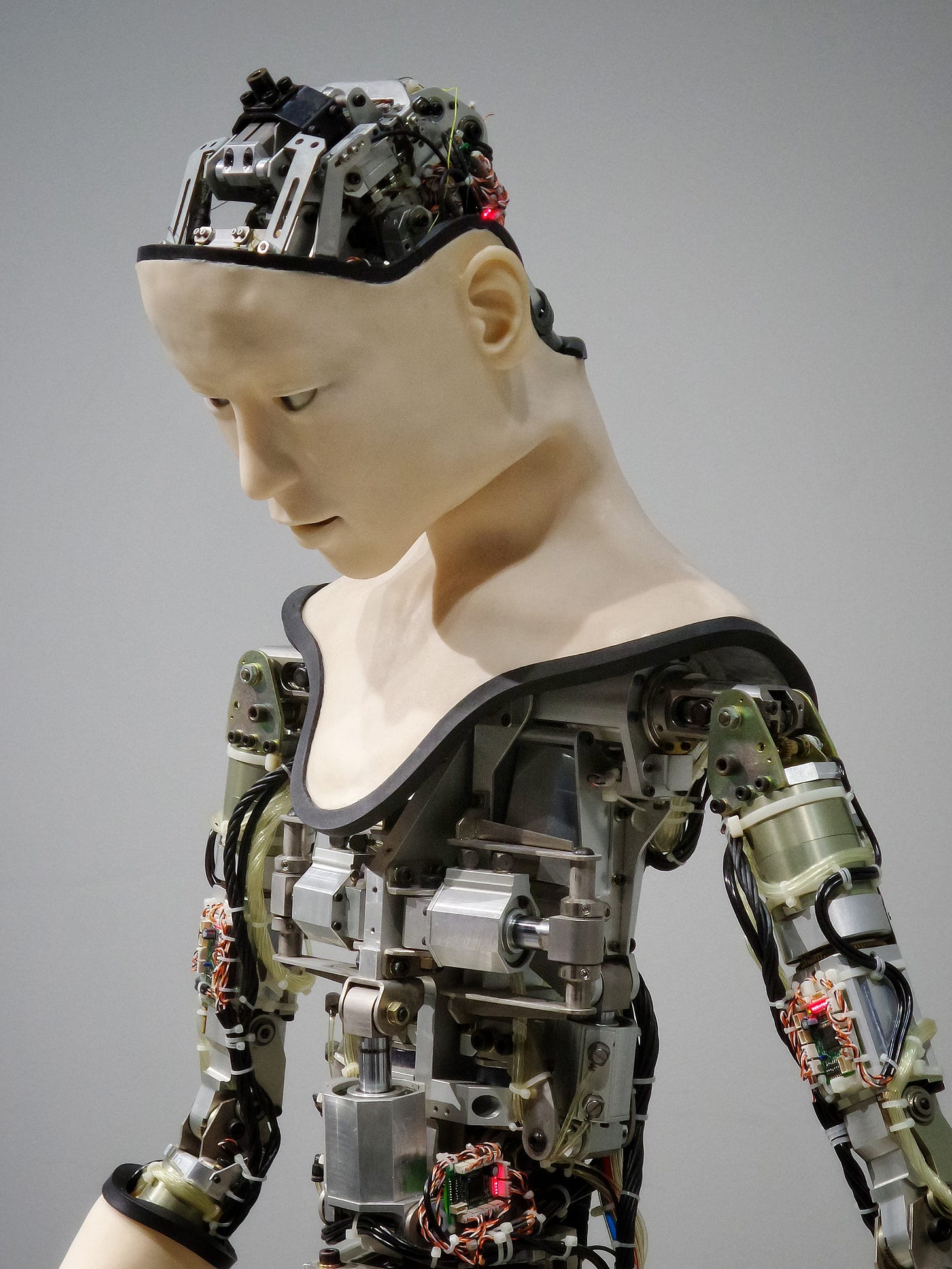September 2023 Issue
EXAMINING THE SCOPE OF ARTIFICIAL INTELLIGENCE IN EDUCATION - Alya Jassmer Sarna
Photo credit: Andrea de Santis
Abstract
This literature review examines the role of artificial intelligence in Education. It seeks to understand the platform (e-Learning) through which artificial intelligence got the push it needed to enter the realm of education. It considers its evolution to present-day workings, its limitations, and its future scope.
Keywords: artificial intelligence, AI, education, smart-ed, knowledge, space theory
Literature Review
Artificial intelligence (or AI) has been defined by IBM as the human-like intelligence exhibited by a computer, robot, or machine. As a term, it has been used with increasing frequency over the past few years. It allows computers and other machines to simulate the abilities of the human mind. Like humans, it learns with the aid of examples and experience, recognizes objects, comprehends, reacts to language, makes decisions, and helps solve problems. As computers and other technological devices have been made accessible to more people, they have begun to be used as tools to educate individuals. AI has therefore had an opportunity to grow within this field and it continues to transform the way in which individuals learn and remember information. This literature review examines e-learning which allows AI to operate as a tool used in education. It also examines the varied roles AI takes on in order to teach learners.
E-Learning Paves the Way for AI in Education
In order to successfully grasp the way in which artificial intelligence functions within the world of education, it is important to understand how it came into being. Electronic learning or (e-learning) has helped pave the way for artificial intelligence to emerge within this field.
During its conception, e-learning saw itself molded with the aid of varied behaviorist patterns applied to the development of teaching machines. Ravenscroft (2001), notes that Skinner’s 1954 ideas of making use of operant conditioning via reinforcement schedules have helped shape programmed instruction. Skinner’s teachings were based on a belief that behavior was learned with the aid of reinforcing consequences provided by the environment. Therefore, when e-learning came into being there was an emphasis on designing an external environment that helped shape behavior with the aid of learner-system interactions. Pask and Scott (1972) helped design a detailed system called CASTE (Course Assembly System and Tutorial Environment) which allowed learners to navigate the curriculum provided along with the types of material available for their learning. The most important feature of this system was the fact that the machine was taught to accommodate whichever learning style the learner decided to opt for. Learners were thus able to choose and clearly state their strategy for learning. Gagné (1974) took this a step further by providing a methodology of task analysis. The relevance of this lies in the fact that it helped enhance conceptual and procedural knowledge. Each of these steps helped hone e-learning so that it ultimately became possible to incorporate artificial intelligence into its realm. Evolution of AI in Education
In the last century, artificial intelligence was understood to be “the belief that all that is essential to human intelligence can be formalized”. (Dreyfus, 1974). While this still holds true today, the definition as established earlier is clearer in what it presently encompasses. AI in education is primarily focused on identifying what a learner is knowledgeable on and what they aren’t aware of with the aid of testing. Personalized curricula are then provided to the learner keeping in mind their specific needs. Knowledge space theory has been used with great frequency in order to train a number of AI learning platforms. Functioning as a set and order theoretical framework, it proposes mathematical formalisms. These are used to operationalize knowledge structures in a given domain. (Doignon and Falmagne, 1999). This theory operates on the idea that every knowledge domain can be viewed in terms of a set of domain problems or items. (Stahl and Hockemeyer, 2019). Mathematical language is therefore taken advantage of such that “knowledge points” can be defined and tracked. These points are used to determine a learner’s “knowledge state” pertaining to a given subject. AI has been used in education to create solutions to help address issues humans may not be able to achieve with celerity and/or accuracy. These solutions range from providing speech recognition services, providing translations for different languages to helping with decision making. With the aid of AI, e-learning platforms can be enhanced with real-time questioning. They can be used to generate new learning material and allow for natural language processing. While e-learning has been a great help in making the same content accessible to a varied assortment of learners, it is not possible for a single instructor guiding these learners to always cater to their queries and doubts simultaneously. Artificial intelligence makes up for the instructor’s shortcomings and is able to assess each learner’s performance thus far and use it to evaluate their pattern of learning. Based on the information discerned, it helps customize the learning material provided such that it helps the learner perform better. AI also allows for learning to be done in a fun and engaging manner by creating tactical games. These games make it possible to absorb new material with greater ease. Moreover, learners tend to feel confident about learning a greater amount of information if it is presented in the form of games. If we examine existing software that has made use of AI, it is extensive. Nuance for instance uses Dragon Speech Recognition software which helps students who struggle with writing. This software allows students to express themselves and the software types it all down. Grammatical errors combined with typing speeds aren’t an issue here since the software is intelligent enough to know what the speaker is saying. Adaptive learning technology is used by Knewton which makes use of an AI-based program called Alta. Alta’s function lies in identifying gaps within a student’s knowledge and accordingly provides them with relevant coursework such that they are on the right path required for college-level courses. Conversational technology has also been incorporated by some companies like Cognii which makes AI-based products for education institutions. The virtual assistant it has developed is used to help guide students in open format responses. These are aimed at improving their critical thinking skills. One-on-one tutoring and real-time feedback are provided to students on a tailor-made basis.
Photo credit: Owen Beard
Limitations of AI within Education
When considering the ethics of AI operating within the world of education, however, it is important to note that several algorithms presently used operate with biases. At times these biases are less likely to occur when humans replace the algorithm. Take, for instance, the automated tools used to score essays that are formally known as natural language processing (NLP) artificial intelligence systems. While their usage has increased to grade standardized tests in the United States, they are flawed as they have a bias against certain demographic groups. Research conducted by psychometricians and AI experts helped shed light on this bias. This is owed to the fact that the algorithms in play don’t inspect the standard of writing provided. Since they’re fed with vast amounts of human-graded essays they seek to identify sequences that correspond with better or poorer grades.
The Future of AI and Education
It is important to bear in mind that while AI-operated education software and programs are helpful, they have a long way to go. Software designers of the same need to consider whether they want the AI they create for educational purposes to be AI-Led or AI-Assisted. Each of these has different ramifications to teaching styles incorporated. In the former, humans take a back seat and only step in if necessary. Conversely, AI-Assisted technology seeks to help educators and make their patterns and styles of teaching easier. AI-Assisted education is ultimately likely to fare better than AI-Led education as there are several aspects to teaching where humans perform better than computers. This includes being able to teach from experience, the ability to make cognitive and social connections, talking out loud, performing with their bodies, and improvising and making do with the resources available. (Selwyn, 2018).
Photo credit: Possessed Photography
References
Achievement Within Reach. (2020, November 09). Retrieved April 30,
2021, from https://www.knewton.com/
Artificial Intelligence for Education and Training. (n.d.). Retrieved April
30, 2021, from https://www.cognii.com/
Dragon education Solutions-Improve Student Learning: Nuance. (n.d.).
Retrieved April 30, 2021, from
https://www.nuance.com/dragon/industry/education[1]solutions.html
Dreyfus, H. L. (1974). Artificial intelligence. The ANNALS of the American
Academy of Political and Social Science,412(1), 21-33.
doi:10.1177/000271627441200104
Doignon, J., & Falmagne, J. (1999). Knowledge spaces. Berlin: Springer.
Flawed Algorithms are Grading Millions of Students' essays. (n.d.).
Retrieved April 30, 2021, from
https://www.vice.com/en/article/pa7dj9/flawed-algorithms-are[1]grading-millions-of-students-essays
GAGNE, R.M. (1974) Essentials of Learning and Instruction. Hinsdale,
Ill, Dryden Press.
Hockemeyer, C., & Stahl C. (2019 April 07) Knowledge Space Theory.
Retrieved April 24, 2021, from https://cran.r[1]project.org/web/packages/kst/vignettes/kst.pdf
IBM Cloud Education. (n.d.). What Is Artificial Intelligence (AI)?
Retrieved April 24, 2021, from
https://www.ibm.com/cloud/learn/what-is-artificial-intelligence
Neelakandan, N. (2019, October 09). Artificial Intelligence-Based
eLearning Platform. Retrieved April 30, 2021, from
https://elearningindustry.com/artificial-intelligence-based[1]platform-impact-future-elearning
Pask, G., & Scott, B. (1972). Learning strategies and individual
competence. International Journal of Man-Machine Studies, 4(3), 217-
253. doi:10.1016/s0020-7373(72)80004-x
Selwyn, N. (2020, September 04). Six Reasons Artificial Intelligence
Technology Will Never Take Over from Human Teachers.
Retrieved April 24, 2021, from
https://www.aare.edu.au/blog/?p=2948
30th, R., 17th, S., & 18th, M. (2020, September 29). AI in Education:
Where is It Now and What Is the Future? Retrieved April 30, 2021,
from https://www.lexalytics.com/lexablog/ai-in-education[1]present-future-eth
Alya Jassmer Sarna has studied qualitative research at a fairly in-depth level and has graduated with a Master’s degree in Sociology from Columbia University. Her graduate thesis, which dealt with the sociology of morality and ethics in relation to the meditative practice of Vipassana, has critically shaped her understanding of how individuals understand success, what determines their actions and how they ultimately tackle life. She is passionate about art history, jigsaw puzzles, and learning new things. She presently writes articles for several financial institutions of repute and is currently interning with the Library of Congress (Washington, DC)






